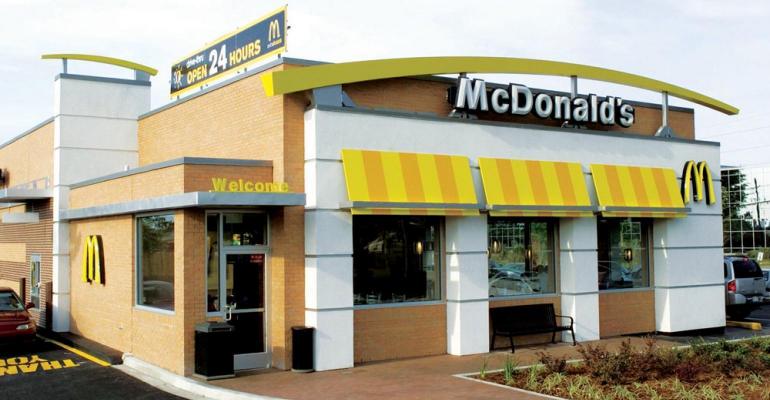McDonald’s Corp.’s menu prices increased in the high single digits and guest counts were flat in the second quarter ended June 30 as the company remains cautious about consumer sentiment, executives said Tuesday.
The Chicago-based burger giant reported U.S. same-store sales increased 3.7% and global same-store rose 9.7% in the second quarter, with most the increases attributed to price increases to offset commodity and labor inflation.
“We’re taking smaller, more frequent price increases because it gives us the flexibility to be able to see how consumers are reacting and then adjust if or when necessary,” said Kevin Ozan, McDonald’s chief financial officer, in a Tuesday earnings call.
In the United States, Ozan said, “we are seeing some trade down. We're seeing customers — specifically lower income customers — trade down to value offerings and fewer combo meals.”
Chris Kempczinski, McDonald’s CEO and president, said the gap between the prices of food in restaurant and food at home was the largest the company has seen in 50 years.
“Food at home has increased pricing significantly faster” than the pace at McDonald’s and other restaurants, he said. “I don’t know what the impact of that is. But certainly, we expect that there is some benefit that we are seeing.”
Kempczinski said consumer sentiment was weaker in Europe than elsewhere, so the company is watching scores for “good value for the money” in customer surveys.
“Even though we're pushing through pricing,” he said, “the consumer is tolerating it well, and we're still doing very well from the value standpoint.”
Kempczinski said he doubted automation would help reduce costs in the short term.
“We've spent a lot of time money effort looking at this,” he said, “and there is not going be a silver bullet that goes and addresses this for the industry.
“The idea of robots and all those things may be as great for garnering headlines,” Kempczinski cautioned. “It's not practical in the vast majority of restaurants. The economics don't pencil out: You don't necessarily have the footprint, and there's a lot of infrastructure investments that you need to do around your utility, around your HVAC systems. You're not going to see that as a broad-based solution anytime soon.”
Kempczinski also addressed recent reports of franchisee unrest among some U.S. operators.
The company in December announced a commitment for $250 million in financing options for under-represented operators.
“Everything that was announced is about for us continuing to make sure that we are going to be the best place for the best franchisees,” Kempczinski said. “You only get to make those announcements, in my view, when you're doing it from a position of strength. That's what we've got in the U.S. right now, earned over the last several years through our performance.”
He said McDonald’s demand for our restaurants “significantly outstrips” the supply among new franchisees as well as existing operators.
“The vast majority of our current franchisees are continuing to look for ways to grow their organizations by buying new restaurants,” Kempczinski said, “and they're also looking for ways for their children to continue to run and continue in the system.”
For the second quarter ended June 30, McDonald’s net income was $1.188 billion, or $1.60 a share, compared to $2.219 billion, or $2.95 a share, in the same period last year. Results included $1.2 billion of charges related to the sale of the company's Russia business and a gain of $271 million related to the company's sale of Dynamic Yield. Revenues dipped slightly to $5.718 billion from $5.887 billion in the prior-year quarter.
McDonald’s has nearly 40,000 locations in more than 100 countries. About 95% of McDonald’s restaurants worldwide are operated by franchisees.
Contact Ron Ruggless at [email protected]
Follow him on Twitter: @RonRuggless

